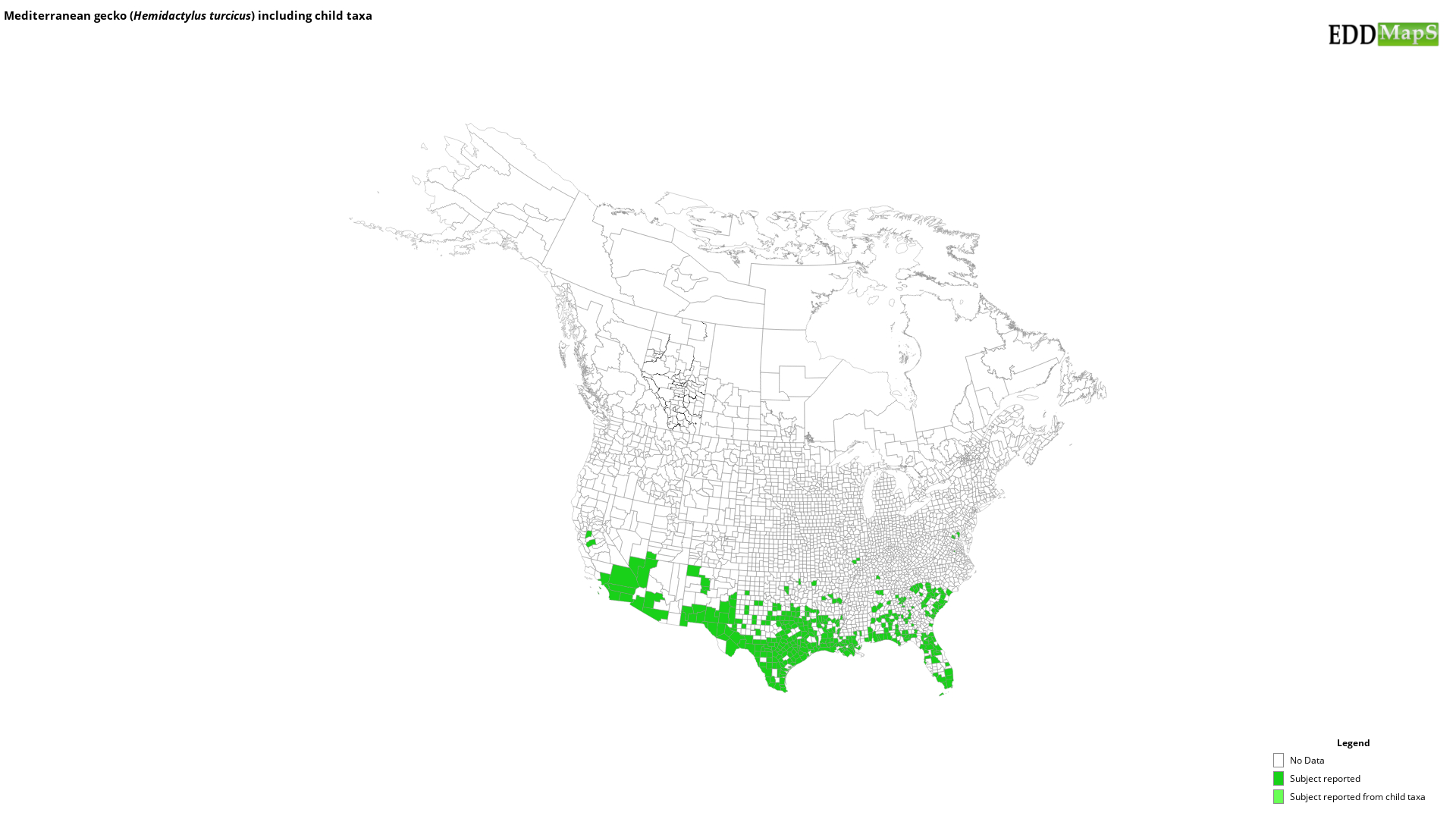Mediterranean gecko
(Hemidactylus turcicus)
This species is Introduced in the United States
Origin
Hemidactylus turcicus is native to southern Europe and northern Africa. Introduced to the United States, Mediterranean geckos are found throughout the southern states.
Life Cycle
H. turcicus are small geckos with a length of 4-5 in. (10-13 cm). Coloration is white, grey, or pale pink with bumpy or warty skin. Mediterranean geckos are nocturnal species that prey on insects, spiders, and other invertebrates. During reproduction, female Mediterranean geckos lay several clutches of 2 eggs during the summer months sometimes in communal nesting sites.
Distribution
Mediterranean geckos are established and breeding in the Southeast United States, Texas, Arizona, and California.
Control Efforts
No long-term negative effect is associated with H. turcicus. H. turcicus has a strong resistance to pesticides.
http://www.tsusinvasives.org/home/database/hemidactylus-turcicus
https://srelherp.uga.edu/lizards/hemtur.htm
Hemidactylus turcicus is native to southern Europe and northern Africa. Introduced to the United States, Mediterranean geckos are found throughout the southern states.
Life Cycle
H. turcicus are small geckos with a length of 4-5 in. (10-13 cm). Coloration is white, grey, or pale pink with bumpy or warty skin. Mediterranean geckos are nocturnal species that prey on insects, spiders, and other invertebrates. During reproduction, female Mediterranean geckos lay several clutches of 2 eggs during the summer months sometimes in communal nesting sites.
Distribution
Mediterranean geckos are established and breeding in the Southeast United States, Texas, Arizona, and California.
Control Efforts
No long-term negative effect is associated with H. turcicus. H. turcicus has a strong resistance to pesticides.
http://www.tsusinvasives.org/home/database/hemidactylus-turcicus
https://srelherp.uga.edu/lizards/hemtur.htm
Resources
- Wikipedia - Wikimedia Foundation, Inc
- Hemidactylus turcicus - Mediterranean House Gecko - Californiaherps.com
- Lizards of Georgia and South Carolina - University of Georgia
- Hemidactylus turcicus - NatureServe
Selected Images
Maps
EDDMapS Distribution - This map is incomplete and is based only on current site and county level reports made by experts, herbaria, and literature. For more information, visit www.eddmaps.org
State Lists - This map identifies those states that have this species on their invasive species list or law.
Invasive Listing Sources
Taxonomic Rank
| Domain: Eukarya |
| Kingdom: Animalia |
| Phylum: Chordata |
| Class: Reptilia |
| Order: Squamata |
| Suborder: Gekkota |
| Family: Gekkonidae |
| Genus: Hemidactylus |
| Hemidactylus turcicus |
Synonyms and Other Names
Other Common Names:
Mediterranean gekko, Mediterranean house gecko
Related Scientific Names:
Hemidactylus turcicus turcicus LINNAEUS, 1758 (Synonym)
References
Common Name Reference: Integrated Taxonomic Information System on-line database.
Scientific Name Reference: Integrated Taxonomic Information System on-line database.


